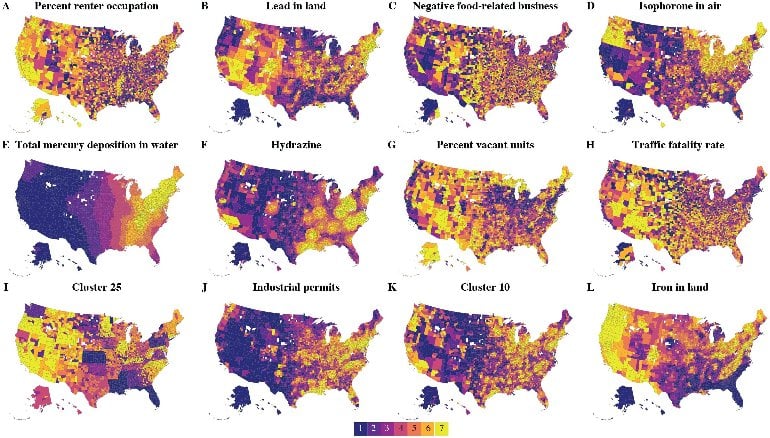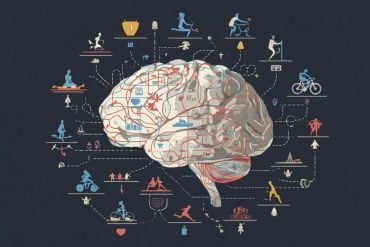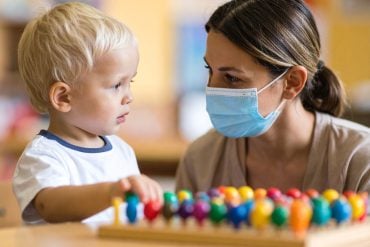Summary: Changes in human sex ratio at birth are associated with the presence of air and water pollution, a new study reports.
Source: PLOS
Changes in the human sex ratio at birth—defined as the percentage of newborns that are boys—are associated with the presence of air and water pollutants, but are not predictably associated with seasonality or weather, according to a new study of more than 6 million births in the US and Sweden.
The study, led by Andrey Rzhetsky of the University of Chicago, is publishing December 2nd in the journal PLOS Computational Biology.
For years, people have had ideas—some in the realm of old wives’ tales, and others backed up by small datasets—about what influences the ratio of baby boys to baby girls, which fluctuates over time. At a biological level, the sex ratio at birth (SRB) can be affected by hormonal factors that specifically terminate female or male embryos during pregnancy.
Past studies have suggested pollutants, changes in weather, and psychological stress as possibly changing the SRB, but most studies have focused on just one or two factors at a time.
In the new work, the researchers analyzed records from the IBM Health MarketScan insurance claim dataset on more than 3 million births in the US from 2003 to 2011, as well as records on more than 3 million births in the Swedish National Patient Registry from 1983 to 2013. Additional information on weather and pollutants at the time of each birth was available from other national databases.

According to the new analysis, changes to the SRB were not associated with seasons, ambient temperature, violent crime rates, unemployment rates, or commute times. There were numerous pollutants, however, that were found to be associated with changes to the SRB—some increasing the ratio of boys and others decreasing it. These pollutants included polychlorinated biphenyls (PCBs), iron, lead, mercury, carbon monoxide and aluminum in the air, and chromium and arsenic in water.
Other factors found to have an association with the SRB included extreme droughts, traffic fatality rates, industrial permits, and vacant units in an area. When the researchers tested links between two stressful events in the US and the SRB in nearby areas, they found no association between Hurricane Katrina and the local SRB but a significant association in the case of the Virginia Tech shooting.
The study could not determine whether or not the pollutants actually caused the observed changes in the SRB. “Ideally, each SRB-pollutant association could now be followed up with experimental work using human cell lines to dissect the underlying mechanism,” Rzhetsky says. They also say the results could encourage policymakers to “decide to make steps toward reducing environmental pollution.”
About this pollution and population research news
Author: Press Office
Source: PLOS
Contact: Press Office – PLOS
Image: The image is credited to Long Y et al.
Original Research: Open access.
“Observable variations in human sex ratio at birth” by Long Y, Chen Q, Larsson H, Rzhetsky A. PLOS Computational Biology
Abstract
Observable variations in human sex ratio at birth
The human sex ratio at birth (SRB), defined as the ratio between the number of newborn boys to the total number of newborns, is typically slightly greater than 1/2 (more boys than girls) and tends to vary across different geographical regions and time periods. In this large-scale study, we sought to validate previously-reported associations and test new hypotheses using statistical analysis of two very large datasets incorporating electronic medical records (EMRs).
One of the datasets represents over half (∼ 150 million) of the US population for over 8 years (IBM Watson Health MarketScan insurance claims) while another covers the entire Swedish population (∼ 9 million) for over 30 years (the Swedish National Patient Register). After testing more than 100 hypotheses, we showed that neither dataset supported models in which the SRB changed seasonally or in response to variations in ambient temperature.
However, increased levels of a diverse array of air and water pollutants, were associated with lower SRBs, including increased levels of industrial and agricultural activity, which served as proxies for water pollution. Moreover, some exogenous factors generally considered to be environmental toxins turned out to induce higher SRBs. Finally, we identified new factors with signals for either higher or lower SRBs. In all cases, the effect sizes were modest but highly statistically significant owing to the large sizes of the two datasets.
We suggest that while it was unlikely that the associations have arisen from sex-specific selection mechanisms, they are still useful for the purpose of public health surveillance if they can be corroborated by empirical evidences.







